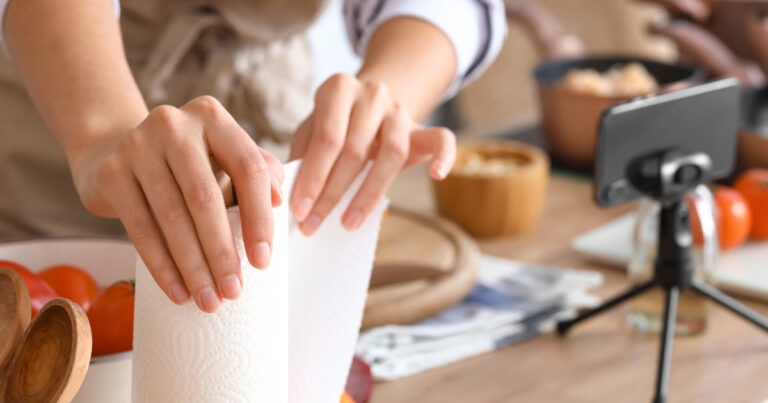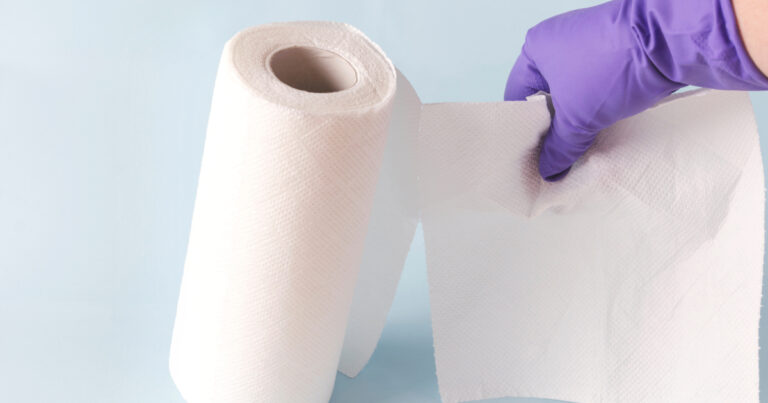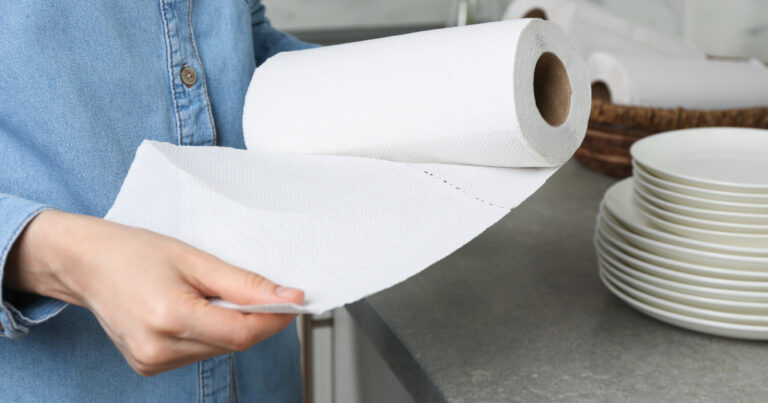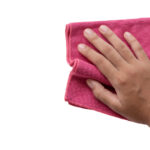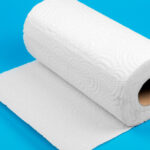Kitchen towels are essential items that serve both functional and decorative purposes.
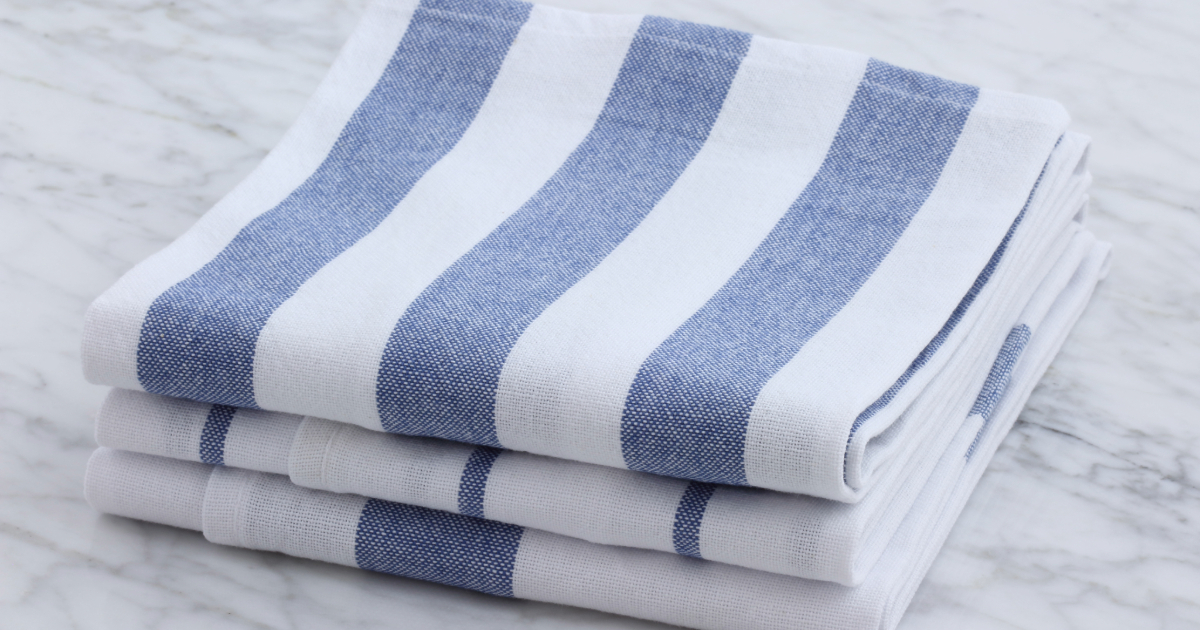
When it comes to kitchen linens, two types often used interchangeably are tea towels and dish towels.
However, while they may seem similar at first glance, there are some key differences between these two towels that set them apart.
What is a Tea Towel?
A tea towel, also known as a kitchen towel or hand towel, is usually made of a lightweight, absorbent fabric like cotton or linen. Tea towels often feature colorful prints, patterns, or embroidery, adding a decorative element to your kitchen.
Here are some of the defining features of a high-quality tea towel:
- Materials used: Cotton, linen, cotton-linen blends
- Weave: Lightweight, fine weave
- Absorbency: Low to medium absorbency
- Texture: Soft, smooth finish
- Uses: Drying hands, lining baskets, covering dough & baked goods, gift-giving
In addition to their beauty and versatility, the lightweight and quick-drying nature of tea towels make them ideal for tasks like:
- Drying Hands – Tea towels’ smooth textures allow them to dry hands thoroughly without leaving behind lint.
- Lining Baskets – Many people use decorative tea towels to line breadbaskets, fruit bowls or other serving containers.
- Covering Food – Their breathable fibers can cover rising dough, baked goods and other foods without causing condensation.
- Gifting & Display – Eye-catching tea towel designs make excellent gifts and kitchen accents.
Key Takeaway: Tea towels have a lightweight, fine weave with gentle absorbency and are used primarily for decor and lighter kitchen tasks. The term “tea towel” originally referred to linens used during English tea services.
What is a Dish Towel?
A dish towel, sometimes called a kitchen towel or dish cloth, has a more utilitarian purpose in the kitchen. Dish towels are designed to absorb moisture and withstand frequent use for drying and cleaning.
Here are some key characteristics of quality dish towels:
- Materials used: Cotton, linen, terry cloth
- Weave: Medium to heavyweight, loose weave
- Absorbency: Highly absorbent (especially terry cloth)
- Texture: Nubby, textured weave
- Uses: Drying dishes, wiping spills, handling hot pans
The absorbent and often textured nature of dish towels make them well-suited to kitchen tasks like:
- Drying Dishes & Glassware – Dish towels can soak up moisture without leaving streaks or lint behind.
- Wiping Counters & Cleaning Spills – They quickly clean up messes on countertops, appliances and floors.
- Protecting Hands From Heat – These towels can protect your hands from hot cookware when used as potholders.
- Covering Dough – Their heavyweight fabric won’t stick to rising dough.
Key Takeaway: Dish towels have a medium to heavyweight weave that provides durability and high absorbency; they are intended for active cleaning and drying in the kitchen.
Key Differences Between Tea Towels and Dish Towels
While tea towels and dish towels may seem interchangeable, there are a few key differences that set them apart in terms of materials, construction, absorbency, and intended use:
| Comparison | Tea Towels | Dish Towels |
|---|---|---|
| Common Materials | Cotton, linen | Cotton, linen, terry cloth |
| Weave Texture | Lightweight, fine | Heavyweight, nubby |
| Absorbency Level | Low to medium | High |
| Typical Use Cases | Decor, hand drying, food covering | Cleaning, dish drying, heat protection |
Understanding these differences allows you to choose the right towel for the right task – and get the most out of both towels. While tea towels add charm and an upscale feel, dish towels play a more utilitarian role in drying and cleaning. Many households find it useful to stock both varieties of towel in the kitchen!
Recommended Uses for Tea Towels
Thanks to their lightweight fabric, quick-drying fibers and decorative appeal – tea towels are best suited to more delicate tasks like:
As Hand Towels
Their smooth, lint-free texture makes tea towels ideal for gently drying hands without leaving behind fabric bits or strands. Tea towels add a decorative touch by the kitchen or bathroom sink.
To Line Baskets
Many people use tea towels in place of napkins or doilies to line breadbaskets, fruit bowls and other serving containers. This provides padding and protection while complementing food presentations.
For Covering Food
Take advantage of tea towels’ breathable nature to cover rising doughs, baked goods like cakes and muffins, cheese platters and other ready-to-serve foods without trapping condensation. Their fibers won’t disrupt delicate foods.
As Table Linens
Fancy tea towels can dress up dining tables as napkin substitutes, especially when hosting sophisticated luncheons or tea parties. They bring an elegant touch without worrying about stains.
For Gifting & Display
Eye-catching tea towel designs make excellent hostess, housewarming and holiday gifts. Their artwork and charming patterns are ideal for showcasing on the refrigerator or other kitchen displays.
How to Use Dish Towels Effectively
Dish towels’ durability and super-absorbent construction make them well-suited for heavy duty drying, spill clean-up and heat protection in busy kitchens. Put them to good use for tasks like:
Drying Dishes and Glassware
Dish towels soak up moisture remarkably well without leaving behind annoying lint, streaks or water spots on dishes and glassware. This helps them dry quickly and cleanly.
Wiping and Cleaning Countertops
Quickly wipe down kitchen countertops, backsplashes, appliances and floors using a dish towel’s absorbent textured surface to effectively clean up drips, spills and splatters as you cook.
As Potholders
Use dish towels to grip and handle hot pots, pans and baking sheets fresh from the oven. The towel creates a protective barrier keeping your hands safe.
Covering Rising Doughs
Let bread dough rise effectively by covering it with a dish towel instead of plastic wrap. The breathable fabric won’t cause dough to stick or sweat.
Straining Foods
You can use tightly-woven dish towels as makeshift strainers or cheesecloth to drain pasta, separate spices from broths or wrap herbs.
Key Takeaway: Choose tea towels for decorative tasks and dish towels for active cleaning and drying around the kitchen. Consider keeping both varieties handy!
FAQs
Should tea towels and dish towels be washed differently?
You can launder both tea towels and dish towels together using hot water and an odor-fighting detergent suitable for kitchen linens. However, take care to wash and dry dish towels separately from table linens like napkins or placemats to prevent lint transfer.
How often should you wash kitchen towels?
It’s best practice to launder your kitchen towels at least once weekly since they harbor germs. Wash towels more frequently if actively handling raw meat juices or marinades. Sanitize towels by adding bleach or vinegar to the wash cycle.
Why do some kitchen towels leave lint or strands behind?
Lower quality kitchen towels made using shorter cotton fibers can leave annoying lint and loose threads behind on dishes, glassware or countertops. Stick to high-quality, tightly constructed linens.
Should you use bleach when washing kitchen towels?
While not required, adding 1⁄2 cup bleach to your towel wash cycle helps sanitize them by killing bacteria. Vinegar also cleans and deodorizes. Follow packaging instructions and allow proper ventilation.
How should you dry tea towels and dish towels?
Line or flat drying allows tea towels and dish towels to maintain their shapes and absorbency. Avoid high heat drying methods that could scorch or fade fabrics over time. Iron tea towels gently if needed to smooth out wrinkles or creases before gifting or display.
Conclusion
Whether you’re looking to add charm, handle kitchen tasks or clean messes, understanding the differences between tea towels and dish towels helps ensure you use the right tool for the job.
Choose tea towels when an attractive, decorative linen is required like lining baskets or when only light absorbency is needed like drying hands or covering food.
Opt for the durability and absorbency of dish towels when actively drying dishes and glassware without streaks or wiping up spills and messes around your kitchen.


